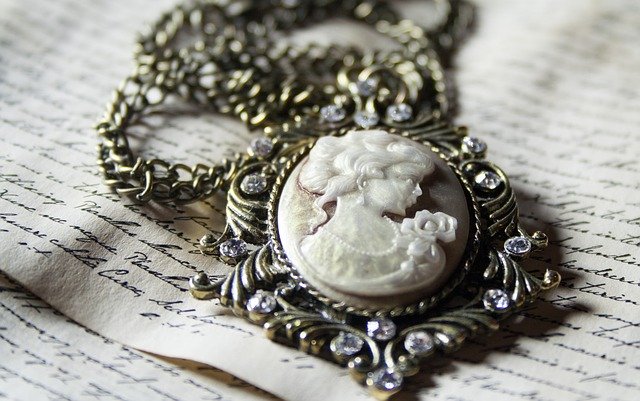
The Tower of London is the symbol of the power of the English monarchy; it was William the Conqueror who built it. Today it has an important function: to maintain the jewels of the British crown. It is a role that it has had since the thirteenth century, we were then under King Henry III. These exceptional jewels have been on display to the general public since 1669.
Before entering the Hall of jewels, it is necessary to know that photographs are prohibited, probably for security reasons: the jewels were the subject of numerous attempts to steal and it is useless to simplify the work of thieves. Even so, at present, are certainly not some photos of alarm systems that allow entry into the room.
For centuries, the Tower of London served to house the most important elements for the king, for his daily life: robes, jewels, crowns and everything that could have value. The crowning ceremony of the monarch has existed for over 1000 years, but the crown itself is much more recent, it is a modern piece that is exhibited like most other pieces.
The jewels were kept in different places in the tower. In the course of history. They were first shown to the public in 1665. The Crown Jewels Hall we see today dates back to 1967 and is located in the eastern part of the Waterloo Barracks. Of course, this area is terribly safe, as it contains not only jewels but also real items, such as serving dishes. The latter were displayed on the second floor. With time, visitors were more numerous, it was necessary to create larger rooms. The construction of this room dates back to 1992 and was completed in 1994. It is 3 times larger than the previous one and can accommodate many more people at the same time. So there is less waiting time to admire the jewels. And even if you do it again, we take the opportunity to improve the security, for example, by presenting the main parts behind a bulletproof glass ... 5 cm thick!
Each shop window is equipped with the best conservation systems. They have ventilation that sends filtered air, as well as lights based on optical fibers.
Once inside the jewelry room, the first area is called the "Hall of Monarchs". Here you will find the coats of arms of the British monarchs, from William the Conqueror to Queen Elizabeth II, as well as the main ornaments of the medieval helmets over time. It is always interesting to see the evolution of these decorations that identify the British forces against their enemies.
Visitors continue their discoveries by watching (optional) the 3 films (quite short). One of them shows the coronation ceremony of Queen Elizabeth II in 1953, it was the first time in history that this event was broadcast on television, we see the young queen advancing, crown on her head. This crown, you will see it a little further away.
The adjoining room is a long hall, it is called the Processional Way, which is where the masses are exposed. Originally, the masses were medieval weapons in wood and metal, but in the course of time they became symbols of the authority of the king or queen. The most worked masses are made of precious metals and inlaid with jewels that reflect the high rank of their owners.
Then, the next room shows the famous crown of England. This is where the treadmills are located to prevent them from getting obstructed in front of the windows. It shows the main crowns of kings and queens of England. Don't worry if you haven't had time to see them, you can easily go back and resume your routine again. If there are people, just line up and come back as many times as you like. And then, there is also a treadmill on the other side, of course! It has a frustrating side because you can't stop long in front of a crown to admire all the jewels, but it has the advantage of allowing everyone to see them, and without searching.
You will see the Crown of the Imperial State worn by the Queen every year at the opening of the parliamentary session. This is the Queen's main crown. There is also the "Queen Victoria's Diamond Crown", the Queen Mother's Crown, which has the distinction of having the diamond, says Koh-i-Nor, a 105.6 carat diamond.
In the next room, the royal insignia is shown, like the dress worn by Queen Elizabeth II. After the execution of King Charles I in 1649, Oliver Cromwell insisted that the jewels be melted down or sold to make pieces, to enlarge the treasure. This period corresponds to an important event for the lost crown jewels. Charles II is sometimes called the uncrowned king, because he is the first to be crowned after the disappearance of the collection of royal jewels.
However, new royal insignia were made in 1661. Most of the objects displayed in the Jewelry Hall date from this period. There is a coronation spoon, it is the oldest piece as it survived the destruction of Cromwell in the 17th century. There is also the scepter on the cross, it is known to have, on its top, the Cullinan I, a 530.2 carat diamond, which makes it the largest diamond in the world. It was established in 1910.
The numbers speak for themselves, and we understand why there is a madness about the crown jewels: they are mainly 23,578 precious stones! The Crown of the Imperial State, alone, contains 2868 diamonds, 273 pearls, 17 sapphires, 11 emeralds and 5 rubies. Note that we can also admire the largest cut diamond in the world, the "First Star of Africa", by Cullinan, the largest diamond ever discovered in the world. He climbed the imperial scepter. These monarchical symbols are still used by English sovereigns during coronations.
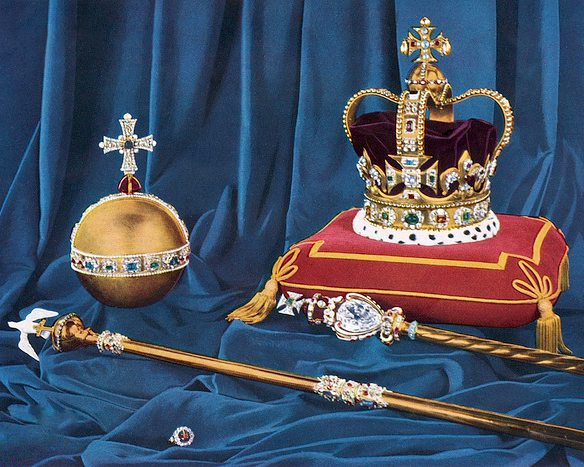
This crown is the largest and most sacred of all British crowns. It is worn only at the time of the actual coronation. It was rebuilt in 1661, replacing the crown used during the medieval period that melted during the civil war.
Made from scratch for the coronation of George VI, this crown was worn by this new monarch when he left Westminster Abbey after the coronation ceremony. It is also worn by Her Majesty the Queen at every parliamentary opening.
This hollow globe is gold, it is one of the royal symbols of Britain. The orbs are found under many monarchies, such an object is the symbol of the Christian world. It was used at every coronation of Charles II. It contains valuable gems, including 365 pink diamonds.
This scepter is one of the most prestigious in the world. The dove at the top symbolizes the Holy Spirit, which shows the spiritual side of British authority. It is made of gold inlaid with 285 gems.
This royal scepter was used for, among others, Queen Victoria in 1838. As she was young, it had to be modified to reduce the size of the handle, which was too big at that time. The huge diamond called Cullinan I, the largest cut diamond in the world, reached its peak in 1911.
This is a crown made for George V during his visit to Delhi as Emperor of India. As the crown jewels cannot leave the United Kingdom, it was necessary to make a new crown especially for the occasion. It contains 6000 diamonds.
History will remember Colonel Blood as a bold villain, capable of a feat that only a malicious mind can succeed. He tried to steal the crown jewels. Born in 1618, Thomas Blood was Irish, a native of County Meath and the son of a talented and prosperous blacksmith. His family had not only wealth but also prestige, Thomas came from a long line of respected men and women his grandfather had even served as a member of Parliament.
Life was difficult for old Thomas when the English Civil Wark broke out in 1642 and he was sent to England to fight for King Charles I. Mr. Blood was clearly a practical-minded man, and from that it was obvious that Cromwell was going to win this war, he switched parties to join the Roundheads. This bold move secured him the reward of a good state when Charles I was defeated, but fate fell upon him, blood had to flee the country when Charles II succeeded him on the throne. Historians do not seem to agree on his fate, but the city of London says he remained in Italy.
The colonel was certainly not happy with this turn of history, and with other unhappy Cromwellians, he dealt other blows of brilliance as Dublin Castle takes to capture the governor. Years later, being already one of the most wanted men in all England, he dared to come back with a false identity and even started practicing medicine. Adventure in the blood of life (a popular topic for anyone who has taken one of the French courses offered by London) was far from over, and that's when he started working on a plot to steal the crown jewels.
They are kept safely in the Tower of London, in one of the lower basements, constantly watched over by their caretaker Talbot Edwards.
Thomas took time to have fun with Edwards, building a friendship that would eventually allow him to steal the jewelry. It was the day he wanted to set up a meeting between his nephew and his daughter Edwards that the robbery took place. Perfectly greased, the robbery was initiated by removing Edwards and managed to put but on the jewelry store. Unfortunately for him, fate played a right turn at that time, a witness should not be there the recognized and gave the alarm. The plans were thwarted by the Colonel's blood.
Incredible as it may seem, luck played in his favor. His charm and spirit managed to win the will of the king, who not only saved his life, but gave him back his freedom and the land a good sum annually. After the case became a familiar face at court and a rather popular man. This impressive and almost unbelievable story of Thomas Blood is one of the most interesting (and lucky) characters in the history of England.
The crown jewels were never stolen as no one else had the spirit and courage to attempt such a project!
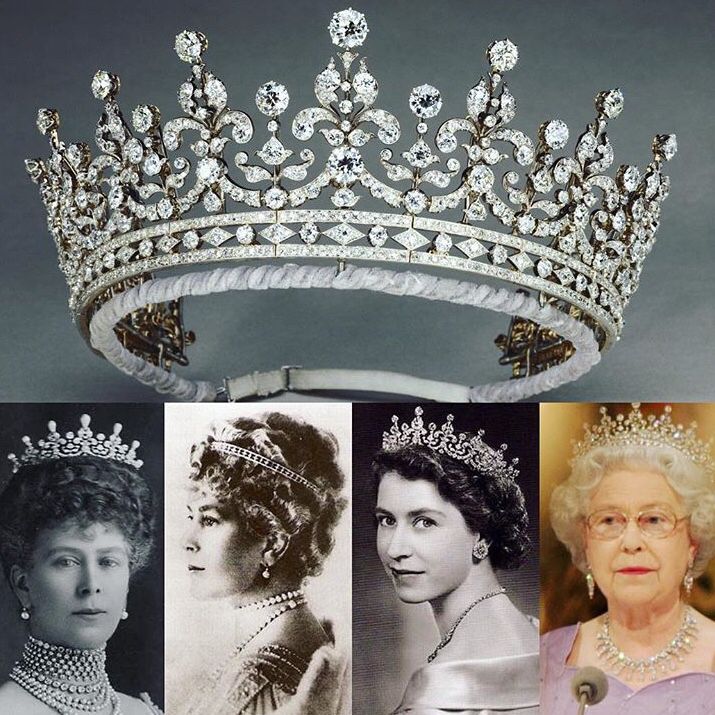
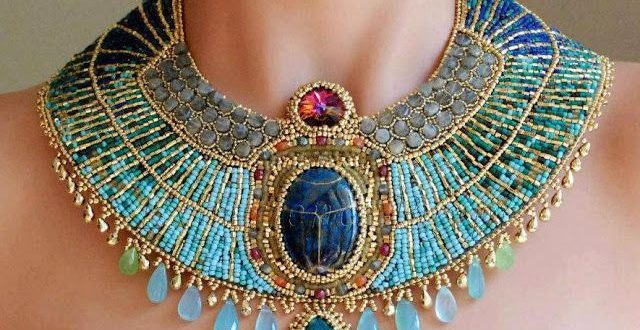
With a religious and magical allegory, Egyptian jewels turned out to be great protectors against evil spirits. Additionally, because of their beauty, they enhanced Egyptian clothing as an accessory or marked the social status of the person wearing them.
Since very remote times, the Egyptian culture developed the goldsmithing with simple materials such as plant branches, shells, pearls, stones inserted in linen threads or cow hairs. During the Middle Empire it reached a great advance with the domain of different metals like gold, silver, bronze, copper and the meticulous carving of semi-precious stones and even glass.
The main particularity of the Egyptian jewels was their symbolism protecting fertility, diseases, keeping away evil, renewing life and invoking the blessings of some gods like Horus and Hathor. For instance, the ankh or key to life safeguarded the life of whoever carried it, by removing all evil and darkness.
Its use encompassed various fields such as ceremonial, ritual, funeral or offerings. The most representative pieces were necklaces, pectorals, rings, earrings and bracelets. Being most of them made of gold, because it was the material associated with the gods, in addition, with semiprecious stones of colors, each one with a different supernatural connotation. In this sense, gold represented the sun, silver the moon, red gems manifested energy, green gems indicated fertility and blue gems expressed eternity.
Much of the above explains the funerary character of Egyptian jewels, in the sense of giving protection to the soul of dead pharaohs from the dark. The treasure that serves to assert this statement is precisely the one found in the tomb of Tutankhamun.
Among the most famous Egyptian jewels found so far are
Tutankhamun bracelet, a gem highlighted by its originality that includes a border of semi-precious stones, a sacred beetle carved in lapis lazuli, with a support of six centimeters in diameter made of gold, containing a clasp to open and close.
Queen Ahhotep's bracelet, a piece that contains in its front part the figure of a vulture with its wings unfolded composed by a chromatic set of semiprecious stones, with a base of two rigid semicircular parts joined by a hinge.
Crown of Princess Knomit, decorated entirely in gold with horizontal and vertical decorations of semi-precious stones or glass, has an ornament of a tree on the front and the representation of a goddess on the back.
The goldsmith art of the Egyptian culture reflected the spirit of a civilization by the elegance, leaving a legacy with techniques that are still used today in the manufacture of jewelry.
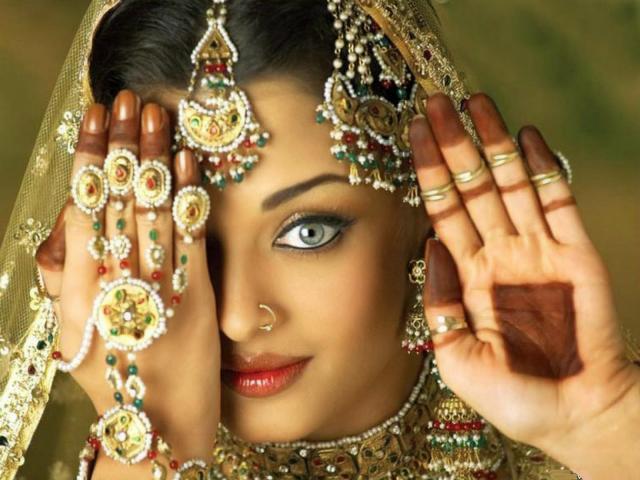
Traditional Indian jewelry is as varied as the country itself and even today designs are used that adorn virtually every part of the body. There are several types of jewelry depending on the region. Each state has its own style which makes it unique and original. For example, the states of Orissa and Andhra Pradesh are famous for their silver filigree work, also known as Tarkashi.
Meenakari style jewelry dates back to the Mughal period and is typical of the state of Rajasthan. In the south of the country, the town of Nagercoil is famous for its temple-inspired jewelry, just as Delhi is famous for its Kundan jewelry.
In the following illustration we present the most popular ornaments and then give a brief description of each one:
Until a few years ago this ornament was worn by brides on their wedding day. The term "maang" means the division of the hair and "tikka" is the point on the forehead where the tilak is applied (the generally circular mark that is placed in the center of the forehead). Today this garment has become popular and is also used by ladies who attend wedding functions or during the celebration of festivals.
Also known as "nath", "koka" or "laung", the nose ring or pin is a very popular garment in the Indian tradition. Its origin is from the Middle East and came to India with the invasion of the Moghuls.
It is the term in Hindi given to the earrings. In India it is used by both men and women since ancient times. In the beginning of civilization, the concept of adorning oneself became popular among people and animal bones and pieces of wood began to be used as jewelry.
The necklace is one of the most elegant pieces of jewelry in the world and in traditional Indian jewelry you can find a great variety of designs and styles.
It is the name given to the arm bracelet, which is very fashionable these days. In ancient times it was worn by men and women for the sole purpose of embellishment. They used to be made of raw metal with figures of vines, snakes or crocodiles.
Also known as "kangan". In addition, bracelets are undoubtedly some universally known pieces of jewelry. In India they are generally worn in pairs, with more than one pair on each arm. Most ladies prefer them in gold or silver or a combination of both. Bracelets have a great meaning in the Hindu religion since it is considered "unfavorable" for a woman to wear her arms naked. Wedding bracelets are usually made of glass. When the husband dies, the Hindu woman breaks her bracelets as a sign of mourning. The color in glass bracelets has different meanings. Each region of India has a kind of color code associated with its traditions. Red symbolizes energy. Blue means wisdom and purple means independence. Green symbolizes luck in marriage and yellow happiness. Orange bracelets mean success, white bracelets symbolize a new beginning and black bracelets mean power. Silver bracelets symbolize strength and gold bracelets mean fortune.
This is what traditional rings are called. In ancient times they were made of raw metal or wood, today their manufacturing methods have been refined and they are manufactured in almost any material such as plastic, copper, iron, aluminum, stainless steel, etc.
Also known as "pajeb", this piece of jewelry is used around the ankle. They are popular with children, young ladies and old ladies. They are famous for their beautiful carving works.
Popularly known as foot rings, they come in a variety of styles and designs. In the past they were used by married women, however today they are used by young women as a fashion accessory. The word Bichua means Scorpion and these rings are not closed like the ones on the hands, they are open at the end and fit the finger when squeezed just like the tail of the scorpion.
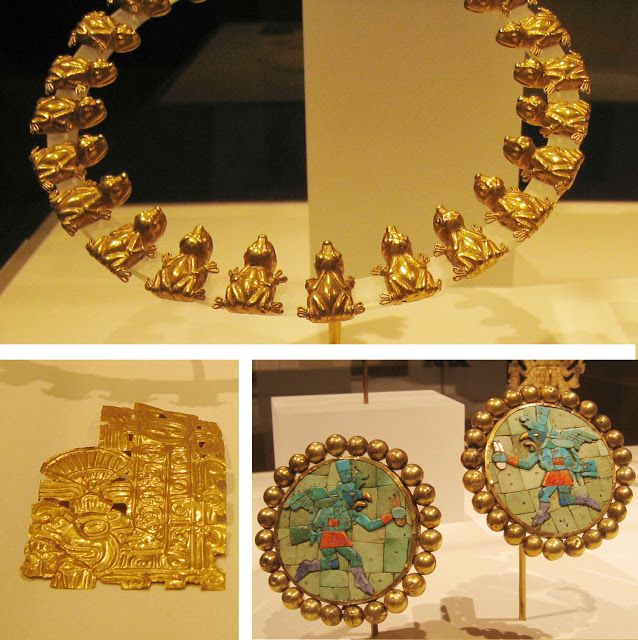
When we talk about pre-Columbian jewelry, we are referring to the jewelry made by the people who inhabited America before the arrival of Christopher Columbus in 1492.
The history of pre-Columbian jewelry began around 4000 BC. Being a rich and varied civilization, there was a large reserve of natural resources in terms of precious metals, copper, gold, silver and a copper-gold alloy called tumbago, these materials were widely used in jewelry making.
In Mexico and Colombia, some of the tribes that made pre-Columbian jewelry exquisite inhabited. Some of these designs were inspired by nature, animals, flowers and landscapes. There were pieces of jewelry from musicians, men with drums and women with children in their arms.
These pre-Columbian jewelry designs were not only made for their aesthetic value, many of these jewels were typically designed with a specific ceremonial, spiritual or secular function to be performed.
For pre-Columbian people, gold was known as the sweat of the sun and silver as the tears of the moon. Gold was mainly used as an offering to the gods and gold jewelry and objects accompanied the dead in their tombs.
Unlike the Peruvian-Andean tribal cultures of the time, eroticism was not particularly prevalent in Mesoamerican art. However, humor and fascination with "grotesque" iconography were recurrent themes in most pre-Columbian cultures and they captured this in their jewelry.
You will discover many hidden gems in some of the best antique stores in the UK.
Search through antique furniture and clothing to find pendants, rings, bracelets and other antique jewelry that you can customize for resale.
Here's a chance to get your bezel roll and add precious stones to empty bezel cups.
We list some of the best antique stores in the UK for you to choose from.
Packed with sellers and buyers, eBay is an ideal place to research your antique jewelry projects.
To recreate timeless designs, people are selling chains, rings, brooches or even pins.
It's worth reading the sellers' comments and contacting them if you have any questions about their product.
Start building a network to keep in touch with your antique jewelry efforts.
You can pick up some unique antique pieces at auction houses all over the UK.
Discover belle époque gems from the Edwardian period, as platinum was introduced as a unique selling point for beautiful pieces.
Discover diamonds of Colombian and Burmese origin, which are in great demand by many jewelers.
Even pearls could have a rich history worth investing in.
Some of the best auctions to attend or search online are the following:
Markets are an ideal place to discover hidden ancient gems:
Covent Garden Apple Market - brimming with handcrafted items, from uniquely scented handmade soaps to sweets and knick-knacks. On Mondays, you can browse for antiques and collectibles for your next antique jewelry project.
St Nicholas' Market - located in the heart of Bristol city center, it can be found inside a historic Georgian gallery, which houses many independent stalls and stores selling antique jewelry, arts and crafts.
Portobello Road Market - An iconic destination for an antique seeker, they are packed with collectibles and antique jewelry.
It is worth investigating the nearest stores or markets if you are looking for antiques near your home.
Online antique jewelry forums are a great place to start if you want to share ideas with others and learn more about where to buy antique jewelry.
If you are looking to sell antique jewelry, you can create a seller's account on eBay, or even at other online markets within Etsy or using your own dedicated website.